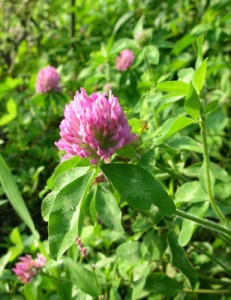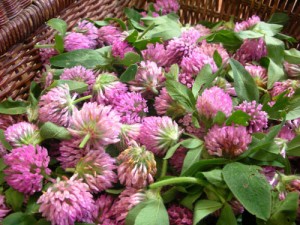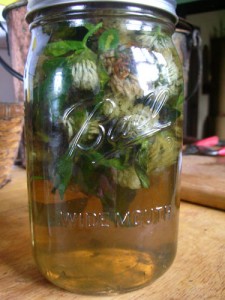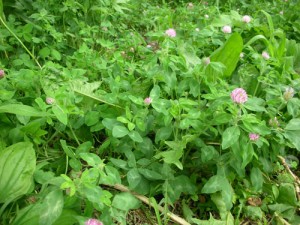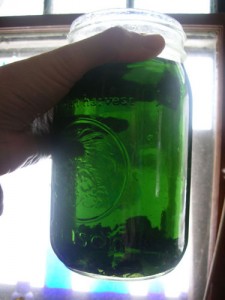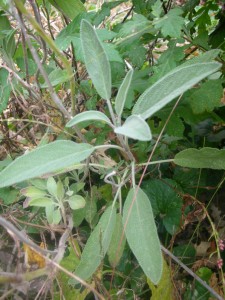Study Group 2011: Herbal Spotlight
Each month, we will focus on one herb. The study group will include reading the lesson, doing ‘experiments, discussing further study and advanced work options (that each person will do on their own at home over the course of the month), and ending with group discussion on general topics while enjoying refreshments. Each month we will discuss what was taught/studied the previous month before starting a new lesson.
2nd Wednesday of each month from 7:00 – 9:00 pm
This year’s line up:
May – Nettles
June – Red Clover
July – Herb Walk
August – Bergamot
September – no class
October – Goldenrod
November – Black Walnut
December – Clove
November 9, 2011: Herbal Spotlight – Black Walnut

Tonight we are learning about all the uses of Black Walnut. This deciduous tree is amazing on so many levels: he offers us food, medicine, wood for beautiful furniture and dye.
Right now is the time to harvest the ripe Black Walnuts. The green hulls are medicinal and contain a lot of iodine. The green hulls, leaves and twigs all can be used for treating fungi such as Candida and Ringworm as well as parasites such as Giardia. Rotten Black Walnut hulls are used for treating hypothyroidism and goiters.
They all can also be used as a dye, being extremely colorfast. Caution is needed when handling the hulls as your fingers will turn dark brown and last several days or weeks. The hulls can be dried, ground and powdered to use as a henna type dye, or cooked down in water to dye silks, wools, cottons or made into a beautiful dark brown ink that can be used to dye wood or used as ink for writing and ink drawings or paintings.
The immature hulls are also used to make Nocino and Vin De Noix. Recipes for both can be found here and here. Recipes for using them in ice cream can be found here. A simpler version can be made by simply chopping up the immature hulls (nuts inside will still be soft) which are usually harvested in June, added to a half gallon jar to fill halfway then topped off with vodka or brandy to fill the jar. Let sit for 4-6 months, strain off the hulls then make a simple syrup and mix 50/50.
If you were unable to make tonight’s class, you are welcome to download tonight’s handout here. Feel free to share with others but please credit me with my work.
June 8, 2011: Herbal Spotlight – Red Clover
This beautiful pinky purple flower is an attractor for native bumble bees (honey bees are too small to reach the nectar), feed for livestock and medicine for humans.
The delicious blossoms are known for their anti-cancer activity, especially when dealing with breast, ovarian and lymph cancers. She has an affinity for cysts, especially in the upper region of the body and works well when there are single cysts.
Full of vitamins and minerals (calcium, chromium, magnesium, iron, copper and phosphorus and vitamins A, B complex and C), this herb makes a wonderful daily infusion that is mildy sweet and satisfying. Try it iced for a cool summertime refreshment.
Tonight we had a chance to head to my local Red Clover patch and harvest a basketful. It went quickly with 5 extra hands helping! That harvest gave us fresh blossoms to make tea and tinctures for all to take home plus enough left over to fill my drying screens for infusion making later in the year.
Red Clover will continue to bloom through the summer but will taper back for awhile and bloom again in late summer. Because of this, she is often known as the herb that gives second chances though it is said the first blooming is superior to the second blooming.
Back in the house we talked about the differences between herbal infusions and teas and then got to sampling. To demonstrate dried herbs offer a higher mineral content than fresh herbs I had made infusions of each earlier in the day and let them steep for 8 hours. We also made a tea of both the fresh and dried blossoms, letting it steep for about 10 minutes. The results were amazing and varied! The dried infusion was dark in color, slightly sweet and mild tasting. The fresh infusion tasted like water even though it had sat for the same period of time. The coloring was also much lighter.
The teas were delightful, demonstrating that Red Clover makes a wonderful beverage tea. Both the fresh and dried were sweet though the dried was a bit stronger. The kids happily guzzled down our leftovers.
In addition to her anti-cancer properties, Red Clover is wonderful for treating coughs, especially irritable, drippy coughs such as coughs from Pertussis and Measles. She is useful for treating Mumps as well, working on the inflamed glands.
Red Clover has mild laxative, diuretic, alterative, anti-inflammatory and anti-cancer properties. She contains coumarin that can change to dicoumarin if the blossoms ferment during drying. This is because the coumarin can combine with a common mold that is found on Red Clover called Botrytis mold which if dried too slowly will ferment and turn to dicoumarin.
If you were unable to make tonight’s class, you are welcome to download tonight’s handout here. Feel free to share with others but please credit me with my work.
May 11, 2011: Herbal Spotlight – Nettles
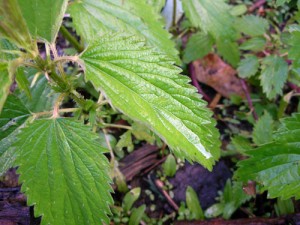
This month we visited with Nettles and many did something they never thought they would: ate nettles RAW! That’s right, raw! It’s a great way to get a quick energy boost and nettles, for all his armor is really a delicious edible.
We harvested Nettles from the garden, discussed how to dry Nettles for using in infusions, soups, casseroles and more during the winter, tasted and compared teas and infusions of fresh and dried nettles, made a tincture and cooked up the fresh Nettles to sample.
Nettles is surprisingly nutritious, great for treating anemia, arthritis and asthma and those headed for dialysis as nettles has an affinity for the kidneys, liver and muscles. Drinking daily infusions of Nettles over time can boost your energy levels, regulate blood pressure (he has been useful for treating low blood pressure especially) and help with the painful inflammation of gout and arthritis. Asthma and allergy sufferers benefit from his natural histamine which can ease with use over time as well as for acute situations.
—
Sign up to receive monthly reminders about the study group: To register, go to our Meet Up page.
—
NEW: Herbal Remedy Workshops at Collinsville Public Library
4th Wednesday of each month from 6:30 – 7:30 pm
February – Medicinal Uses of Culinary Herbs
March – Herbal First Aid
April – Herbs for Children
May – Backyard Herbs: Using the Weeds that Grow in Your Yard
June – Herbs for Women
July – Herbs for Men
August – Herbs for Stress
September – Herbs for Vitality
October – Preparing for Flu and Cold Season
November – Herbs from the Kitchen
December – Herbs for Pets
December 28, 2011 – Herbs for Pets
You’ve switched to using natural products in your home and for your family, now it’s time to give your pet the same consideration! Tonight we’ll talk about general remedies and specific issues pets may have.
November23, 2011 – Herbs from the Kitchen
New to herbalism and don’t know where to start? Overwhelmed by all the choices and herbs out there? Take a deep breath, open up your kitchen cupboard and get started with what you already have available. You might be surprised just how much healing you have ready in your kitchen. With a few common herbs and spices, plus a few other ingredients (honey, lemons, sea salt, vinegar)you’ll be healing yourself and your family in no time!
October 26, 2011 – Herbs for Flu and Cold Season
Prepare now for the cold and flu season. Learn what you can do to proactively prevent the flu from affecting you during the peak season and how to treat it effectively with herbs if you do come down with it.
For more information, read my blog posts:
Using regional herbs for Flu prevention and treatment
Preparing for the Flu
September 28, 2011 – Herbs for Vitality
Vitality!
1. The state of being strong and active; energy. 2. The power giving continuance of life, present in all living things: “the vitality of seeds”
Come learn what it means to have vitality and what you can do to bring vitality to your life.
August 24, 2011 – Herbs for Stress
Stress is a part of everyone’s life. How you deal with it can affect your health. Come learn how to incorporate herbs with other healthy lifestyle choices to combat stress, lessen it and work on eliminating it from your life.
July 27, 2011 – Herbs for Men
Herbs are used in every aspect of our lives but start talking about common problems men have and everyone heads for the hills! There are very few herbals available that focus on men, in fact, you can find more herb books written for pets, women, children and Lyme Disease than you can for men. Come break the common taboo and find out what herbs are beneficial for men. We’ll discuss herbs for general health care as well as issues such as heart problems, stress, prostate problems and more.
Join us as we explore commonly used herbs for treating all these ailments and more! Although this workshop focuses on men, women are welcome to join in and learn how to help the men in their lives as well.
June 22, 2011 – Herbs for Women
Curious about using herbs to treat common female ailments but don’t know where to start? Want to use something more gentle for treating pre-menstrual cramps, moodiness, hot flashes and more? Herbs can be the answer for helping get to the root of the problems with all these common problems and more!
Join us as we explore commonly used herbs for treating all these ailments and more! Although this workshop focuses on women, men are welcome to join in and learn how to help the women in their lives as well.
May 25, 2011 – Using the Weeds that Grow in Your Backyard
Come and explore! What can you find in your own backyard that has medicinal value? You might be surprised to learn you have an entire medicine cabinet growing right at your fingertips! Dandelions, chicory, chickweed, plantain, violets, burdock, clover, oak, cleavers, rose and wild cherry are just a few of many that grow wild.
April 27, 2011 – Herbs For Children
This month we will discuss appropriate herbs for common childhood illnesses. We’ll talk about immune boosting herbs, calming and soothing herbs, herbs for upset stomaches and digestive problems, herbs for sore throats, coughs, fevers and herbs for treating cuts, bumps, bruises, splinters and bee stings. We’ll discuss how to get herbs into kids by making herbal syrups, elixirs and candy balls.
Learn how to get your kids involved with herbs so they can learn to take charge of their own health!
March 23, 2011 Herbal First Aid

This month we’ll explore our medicine cabinet and discuss common herbs that can be substituted for various OTC medications such as Neosporin, Pepto Bismol and more. Come and learn how you can assemble a Basic Herbal First Aid kit for the home and a mini kit for the car.
For more information, see my blog posts on the subject:
Herbal First Aid for the Car
February 23, 2011 Medicinal Uses of Culinary Herbs
This month we will discuss several common herbs found in your kitchen that you can effectively use for many common ailments. Herbs such as Rosemary, Sage, Thyme, Basil and Mint as well as lemons, honey, garlic, sea salt and many more items that are more than just food, they are healing!
Sign up to receive monthly reminders about the study group: To register, go to our Meet Up page.




